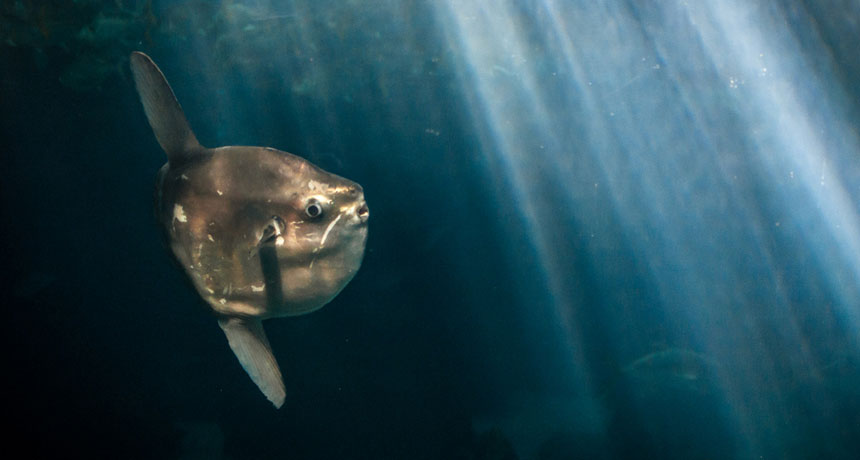Lazy sunfish are actually active predators

Ocean sunfish (Mola mola) hang out at the water’s surface to warm up after diving deep to find food, a new study finds.
blueSkySunHigh/Flickr (CC-BY-NC-SA 2.0)

Ocean sunfish (Mola mola) hang out at the water’s surface to warm up after diving deep to find food, a new study finds.
blueSkySunHigh/Flickr (CC-BY-NC-SA 2.0)